Sydney’s arts: Japan Supernatural at AGNSW, Jim Lambie at Roslyn Oxley9, and Sculpture By The Sea
Japanese Supernatural - the Art Gallery of NSW’s showcase exhibition for summer - pays tribute to the Japanese people’s fascination with supernatural beings, monsters and ghosts through contemporary and historical masterpieces that span 300 years.
Arts
Don't miss out on the headlines from Arts. Followed categories will be added to My News.
JAPAN SUPERNATURAL
Art Gallery of NSW from November 2 until March 8, 2020
$12-$25 (U-12s free) artgallery.nsw.gov.au
Mischievous Japanese spirits have laid siege to the Art Gallery of NSW, transforming it into a bake or “monster house” for the major summer exhibition.
Japan Supernatural is the brainchild of Melanie Eastburn - the gallery’s senior curator of Asian art - and gives free range to the intriguing and complex world of yokai (supernatural beings), obake (monsters) and yurei (ghosts).

More than 180 works spanning 300 years are on loan from galleries including the Minneapolis Institute of Art, the Museum of Fine Arts in Boston and the British Museum.
They range from paintings and woodblock prints by 18th century master Toriyama Sekien to a massive new commission by contemporary artist Takashi Murakami which has just been acquired by the AGNSW for its Sydney Modern extension on which construction begins next week.
Japan Supernatural is the AGNSW’s 2019 Sydney International Art Series exhibition for which it receives NSW government funding through Destination NSW.
The Museum of Contemporary Art’s SIAS show on contemporary British artist Cornelia Parker opens next week. Yokai, the catch-all word for a panoply of Japanese spirits, were often scheming and nasty.
But sometimes they were quirky and humorous, and some were downright erotic, Eastburn says.
Despite a 20th century government stance against ancient superstitions in favour of logic and science, yokai are still blamed for weird or inexplicable events in Japan.
After the 2011 earthquake and tsunami, there were ceremonies to pacify the spirits of the 20,000 dead.
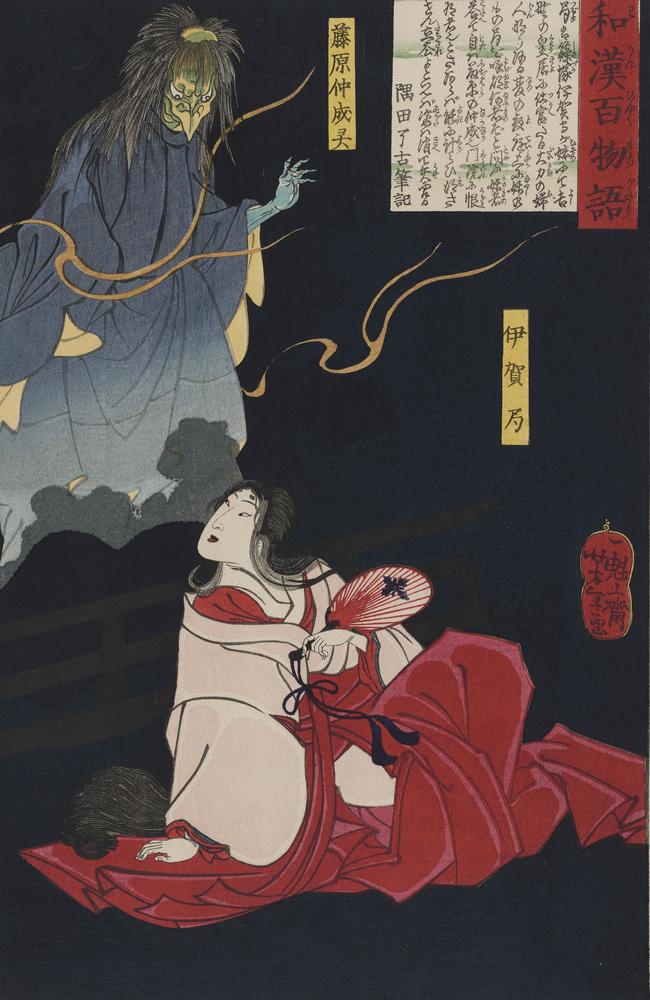
For Japan-born artist Kentaro Yoshida, who now lives in Collaroy, yokai were part of his childhood in the books his mother kept and which he now reads to his two small daughters.
In the Japan Supernatural catalogue is the story of a Japanese shrine which American forces wanted to knock down after World War II. The bulldozer flipped, killing the driver. Today, no one will disturb it.
“Scientifically I am probably not the person to believe, but if you are faced with that I think I would be scared and I would actually, like, believe that,” Yoshida says.
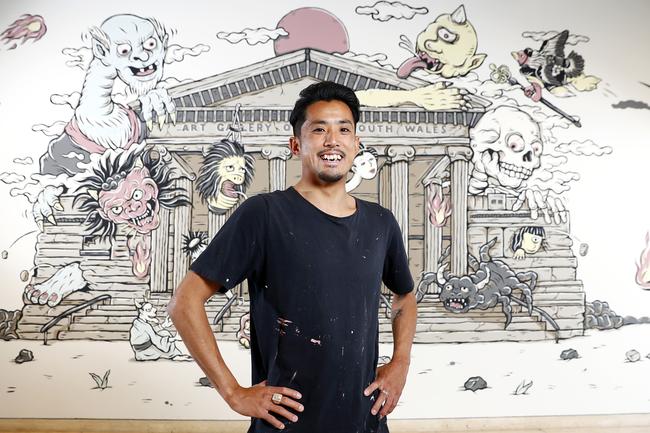
Yoshida and his assistants have spent weeks creating a mural in the AGNSW entrance hall. Titled Night Procession Of The Hundred Demons (Hyakki yagyo), it sets the tone for Japan Supernatural by depicting the gallery under siege by the froglike kappa spirit, the long-necked woman spirit rokurokubi, the raccoon-dog tanuki and a smattering of hitodama fireballs representing dead souls.
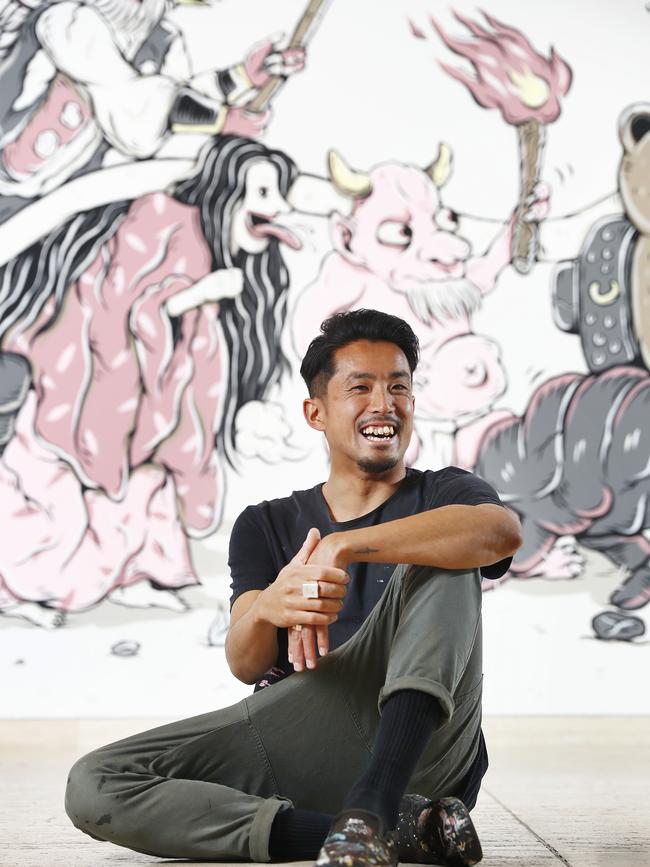
“I wanted to have an educational function to it,” Yoshida says.
Although the cast of characters in Japan Supernatural will be unfamiliar to most visitors to the show, people will recognise the “experiences, premonitions or feelings” that the spirits articulate, according to AGNSW head of international art Justin Paton, who has worked on the contemporary aspects of the show.
“One of the great things about the exhibition is you get to see great historical masterpieces in conversation with contemporary work. You see the powerful continuities that exist. You see the origins of manga, the seeds of a lot of contemporary Japanese animation,” Paton says.
Predicting that artists will love the show — and noting that many AGNSW staff want yokai tattoos — Paton says the artworks on view are feats of imagination and technical prowess. With 18th century woodblock prints shown next to video art, it’s an “energising show”, he adds.
*****
EXHIBITION
Jim Lambie, Wild Is The Wind, Roslyn Oxley9 Gallery, Paddington; from October 31 until November 23, roslynoxley9.com.au
“CARROTS are off the menu tonight,” quips Scottish contemporary artist Jim Lambie as he dips a leafy bunch of them in orange paint and swishes at a white wall in the Roslyn Oxley9 Gallery. Having made orange marks on the wall, Lambie then places the carrots on a shelf where their load of paint continues to drip on to the floor. All done. The artwork’s name? 14 Carrot, spelt like that.
“It’s a word play on gold — you know, nine carat, 14 carat, 22 carat,” Lambie says in his Glaswegian drawl. “The piece has to do what it does. I don’t want to be over controlling. It will evolve over the next five or six hours.”
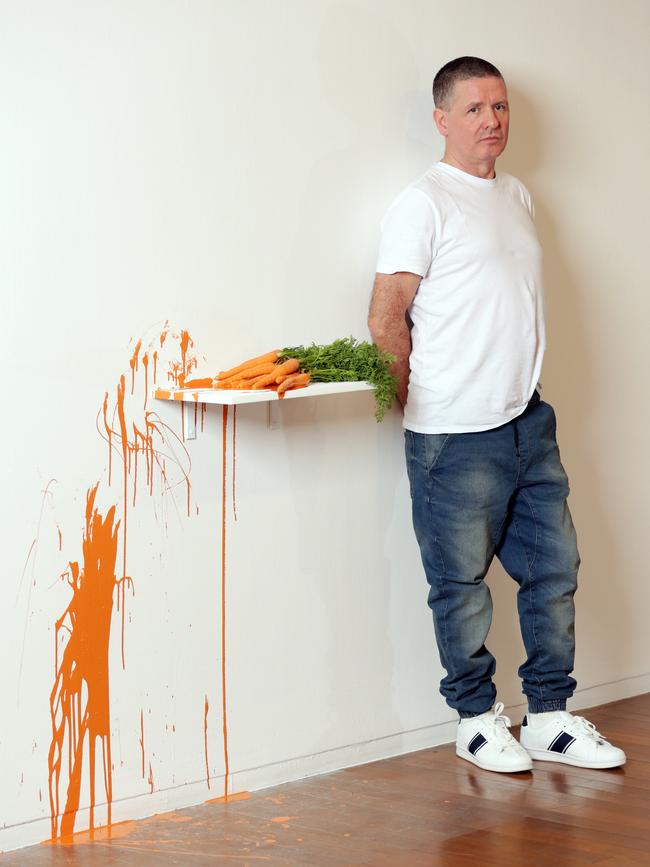
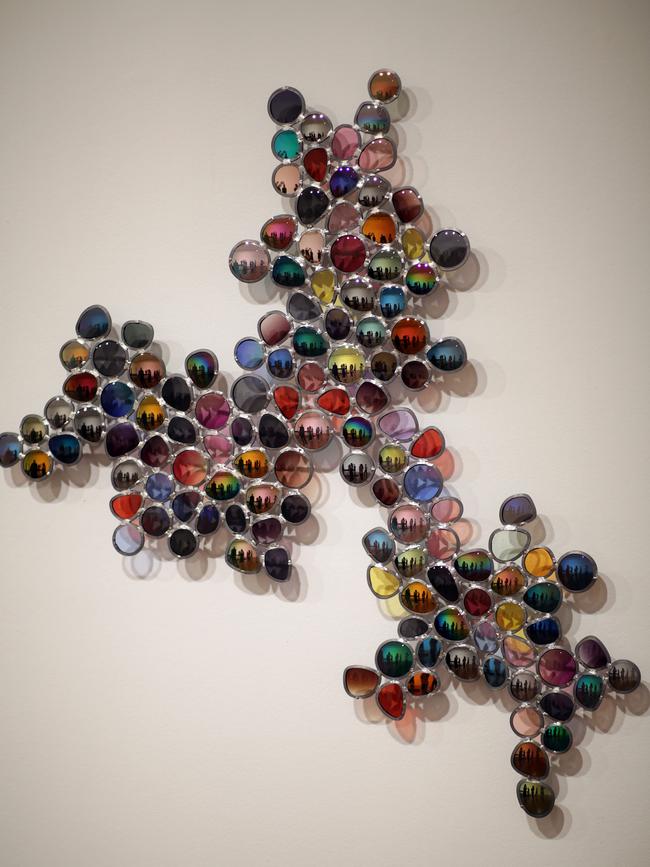
Lambie enjoys creating a spontaneous work for his commercial gallery shows around the world, always using locally found objects.
For his current Sydney show he has done several.
There’s a railway sleeper he suspended from the ceiling by a wire threaded with found necklace beads, and an array of kitchen jars screwed by their lids to the under side of a wooden ceiling beam.
Inside each jar is a second-hand T-shirt. That one is called Sunbeam.
Elsewhere in the show are wall pieces made from found sunglasses lenses, which Lambie compares with stained glass windows.
And there’s a seven-screen video work in which Lambie obliterates his own image with spray paint. Lambie represents serious currency in international contemporary art. He was a nominee for the Tate Gallery’s 2005 Turner Prize. But like fellow Glaswegian Billy Connolly, his sense of humour is solid gold.
*****
SCULPTURE BY THE SEA
Sculpture by the Sea is on, free, until November 10, sculpturebythesea.com
You can’t put a value on a great day out at Sculpture by the Sea. But artists in the Bondi event can definitely put a dollar figure on what it cost them to make their sculptures, transport them to the site and have them safely installed — and it will make you gasp.
Joel Adler estimates his clifftop periscope, Viewfinder, cost him a cool $25,000. Already popular with crowds, the sculpture is located on a dangerous clifftop near Marks Park.
It consists of a weathered and galvanised steel housing for a toughened glass mirror that is angled at the rocks 25m below.
It’s a clever device that allows visitors to marvel at something they would normally never see — or place their lives at risk by attempting to do so.
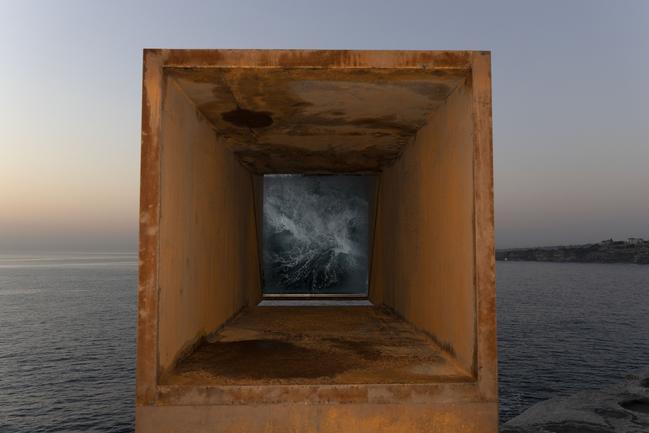
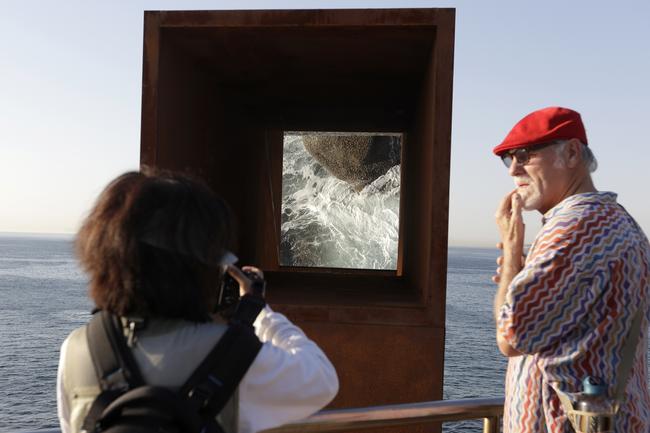

“People have fallen off this cliff in the past. This is a nice way to show it without the danger,” said Adler, who was born in North Bondi but now lives in the Inner West.
“It’s hard to say (how much Viewfinder cost) because I did have sponsors helping. The mirror was sponsored by a company called Axolotl. It’s one of the biggest mirrors they’ve made.
“It would have cost several thousand dollars just for the mirror. I would say the price I’ve put it up for, for sale, would probably just cover the costs.”
Viewfinder is for sale for $48,000 which the artist said would cover his $25,000 costs, allowing for taxes and commission.
He hopes Waverley Council will consider leaving it in situ permanently. He took great pains to locate it and he can’t imagine it anywhere else.
“In preparation for this I was here almost every day with different mapping tools and drones and just trying to get a view underneath because it’s not accessible by foot,” Adler said.
The artist made Viewfinder at his father’s metal fabrication business, Ogis Engineering.
New Zealand artist Morgan Jones estimates he spent $40,000 (in Australian dollars) on his corten steel sculpture, The Sun Also Rises, which is located on Tamarama Beach.
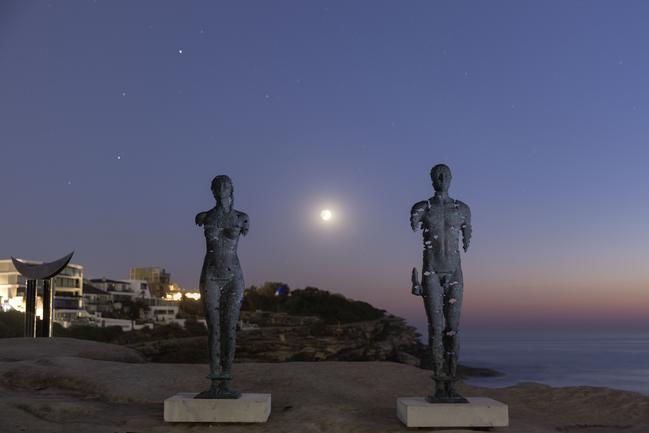
It’s just as well Jones won the $70,000 Aqualand Sculpture Prize, awarded every year at Sculpture by the Sea, although the win meant he could no longer sell The Sun Also Rises because under the terms of the prize it will be located in North Sydney. Its sale price had been $80,000.
“To make it, transport it, having it sitting down there (on the sand), is probably the best part of $40,000,” Jones said.
“The actual freight cost $11,000, making the crate cost about $6000, the fabrication of it cost $22,000 and the painting cost $4000. I don’t want to think about it.”
Given the cost, why do it?
Jones laughs heartily: “Well, what else would you do?”
Many other artists agree that being in the event gives them an unprecedented audience. After all, 450,000 people flock to it each year. According to Sculpture by the Sea founder and director David Handley, artists spend an average of $18,000 each to make their works for the event.
Without the artists, Handley says, Sculpture by the Sea would never happen.

